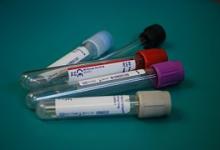The Great Debate – Who Really Won? Save

My favorite session at ACR Convergence is often the “Great Debate.” The debate this year also evaluated one of my favorite topics – ultrasound in giant cell arteritis (GCA). More specifically, it asked the question of whether biopsy or ultrasound should be the preferred modality for diagnosing GCA.
Ultrasound should replace biopsy and is the bestest-thing-ever-OMG-it’s-great: On one side, Dr. Wolfgang Schmidt argued in favor of using ultrasound as the initial approach to diagnosing GCA. Dr. Schmidt is of course the perfect person to debate this position – he introduced temporal artery ultrasound to the world in a 1997 paper in the NEJM and has been an evangelist for the approach. He argued many points, which mostly fall into these buckets:
- Ultrasound is non-invasive and can be performed by rheumatologists without delay (though he acknowledged biopsies have a pretty good safety profile)
- Ultrasound has decent performance characteristics and can also evaluate the axillary arteries, providing additional diagnostic yield (ie more sensitive)
- Temporal artery biopsies are insufficiently sensitive (skip lesions, large vessel disease); rheumatologists often ignore negative results!
- Ultrasound can be repeated over time and may provide additional diagnostic and prognostic value over time
Ultrasound cannot not replace temporal artery biopsy: On the other side, Dr. Tanaz Kermani argued for a “Two Step Screening Test,” where we cast a wide net to minimize false negatives and then perform confirmatory testing to verify diagnosis.
- Histology is not perfect but it is the gold standard for diagnosing GCA, with a 100% specificity for GCA.
- Studies of the sensitivity/specificity of ultrasound have been flawed; in the vast majority of studies, the clinician performing the ultrasound also served as the person who diagnosed the disease. The few studies that were blinded (ie the TABUL study) observed underwhelming performance characteristics for ultrasound.
- Proficiency in ultrasound requires substantial expertise – Dr. Schmidt himself recommended at least 300 scans, which is a number very few US rheumatologists have achieved.
- This works well if you are an ultrasound-uber-exert, but what about the rest of us? I cannot agree more with this point – in my own GCA clinic, I have performed over 150 ultrasounds and still find many cases that make me say “huh?”
My Own Approach: Notably, the joint ACR/EULAR classification criteria allow for a biopsy OR an ultrasound. This gives rheumatologists a lot of freedom to chart their own path. Because temporal artery biopsy is highly specific (though I agree with Wolfgang it is not 100%) and ultrasound is highly available (though I agree with Dr. Kermani that local expertise is a big problem), I prefer an approach that incorporates the best of both modalities.
- I perform ultrasound of the temporal and axillary arteries (the same distribution recommended by Dr. Schmidt) for all patients during my initial consultation visit
- For patients at LOW probability of GCA (ie headache and a low ESR), I will use temporal artery ultrasound to “rule out” disease IF the ultrasound is negative
- For patients at HIGH probability of GCA (ie jaw claudication, PMR, high inflammatory markers), I will use temporal artery ultrasound to “rule in” disease IF the ultrasound is positive
- For patients with a moderate probability of GCA, I typically recommend BOTH modalities. I also recommend biopsies for any patient with discordant clinical/ultrasound findings (ie normal ultrasound despite high probability of GCA)
Join The Discussion
How do you recommend we go about getting expertise in diagnosing GCA by US ourselves ?










If you are a health practitioner, you may Login/Register to comment.
Due to the nature of these comment forums, only health practitioners are allowed to comment at this time.